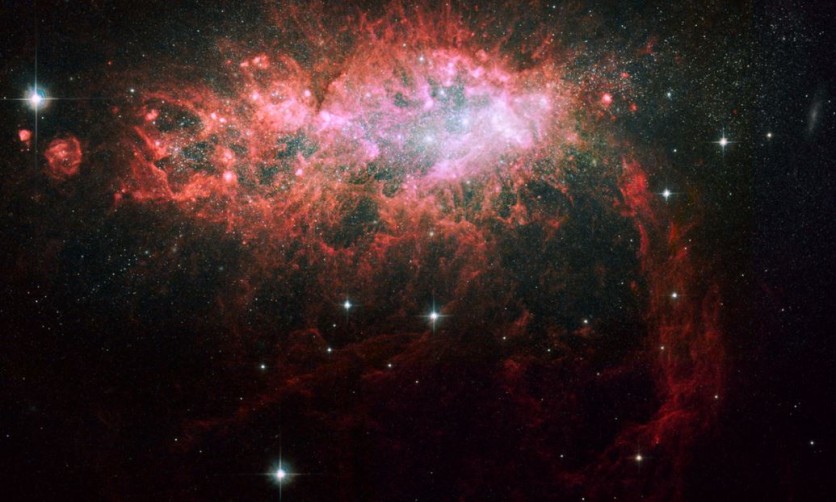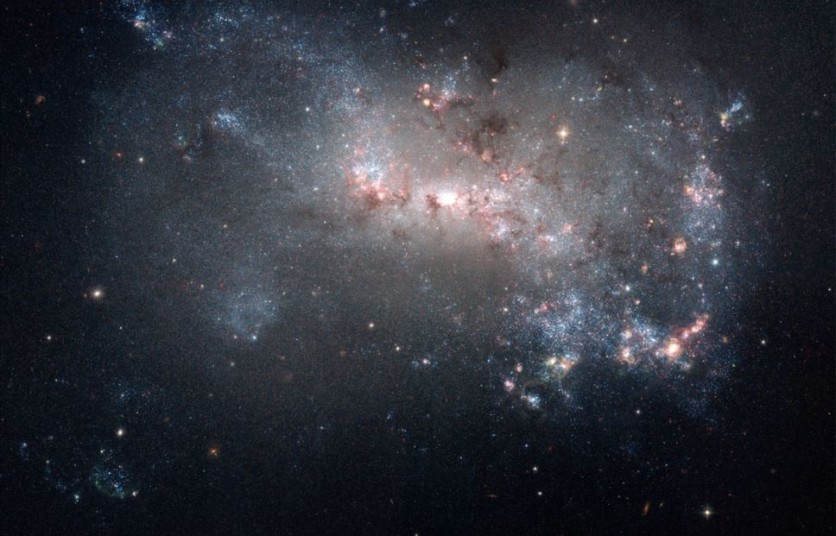The Hubble Space Telescope is now 31 years old and has taken countless amount of photos of space objects and celestial bodies in the past three decades. Many of those you have already seen here on Tech Times.
One of the favorite subjects of Hubble's photos is galaxies. There are probably more galaxies out there than people are aware of, and the space telescope has done its part in helping scientists document them.
If you are one of those people who are easily mesmerized and fascinated by photos of galaxies, you may want to keep scrolling to see some of the images the Hubble Space Telescope has snapped through the years of a certain type of galaxy known as irregular galaxies.
Hubble Space Telescope
The Hubble Space Telescope has taken countless photos of things it has spotted in space throughout the years, giving those here on Earth an idea of what our neighbors in the universe are and what they look like.
One of the many things that the Hubble Space Telescope has taken photos of include colorful, jaw-dropping images of nebulae.
Related Article: IN PHOTOS: Hubble Space Telescope's Snaps Breathtaking Photos of Nebulae - What is a Nebula Anyway?
The Hubble Space Telescope has also documented uncommon or even rare space objects and phenomena. One of which is the Herbig-Haro object, which it took a photo of last month.
Irregular Galaxies: What are They?
Another common subject of the Hubble Space Telescope's photos is the galaxies of the universe. Unbeknownst to many, there are actually different types of galaxies out there: elliptical, spiral, and irregular.
According to the Hubblesite of the National Aeronautics and Space Administration (NASA), elliptical galaxies makeup about one-third of all the galaxies in the universe and are either almost circular in shape or elongated.
Spiral galaxies, on the other hand, "appear as flat, blue-white disks of stars, gas and dust with yellowish bulges in their centers."
As for irregular galaxies, their shapes are unlike that of elliptical galaxies and spiral galaxies. They have very little dust, and astronomers have to look deeper into the universe to spot them.
Hubble Space Telescope's Photos of Irregular Galaxies
If irregular galaxies are not circular, elongated, or disk-like, then how do they look? Here are some of the photos that the Hubble Space Telescope previously took to give you a better idea of irregular galaxies:
NGC 1569

The NGC 1569 has a core that is about 5,000 light-years wide. At the center of this irregular galaxy are three giant star clusters. According to Hubblesite's post about the NGC 1569, each star cluster has about a million stars.
NGC 4449

Located 12.5 million light-years away, the NGC 4449 has what is known as a starburst, which NASA has defined as an "unusually explosive and intense star formation activity ."
NGC 5408

The NGC 5408 is an irregular galaxy first recorded in 1834. It is located 16 million light years away from our planet in the constellation Centaurus.
Also Read: Hubble Spots A Cosmic Rebel: Beautiful, Irregularly Shaped Galaxy Has An Ultraluminous X-Ray Source
This article is owned by Tech Times
Written by Isabella James
ⓒ 2025 TECHTIMES.com All rights reserved. Do not reproduce without permission.




